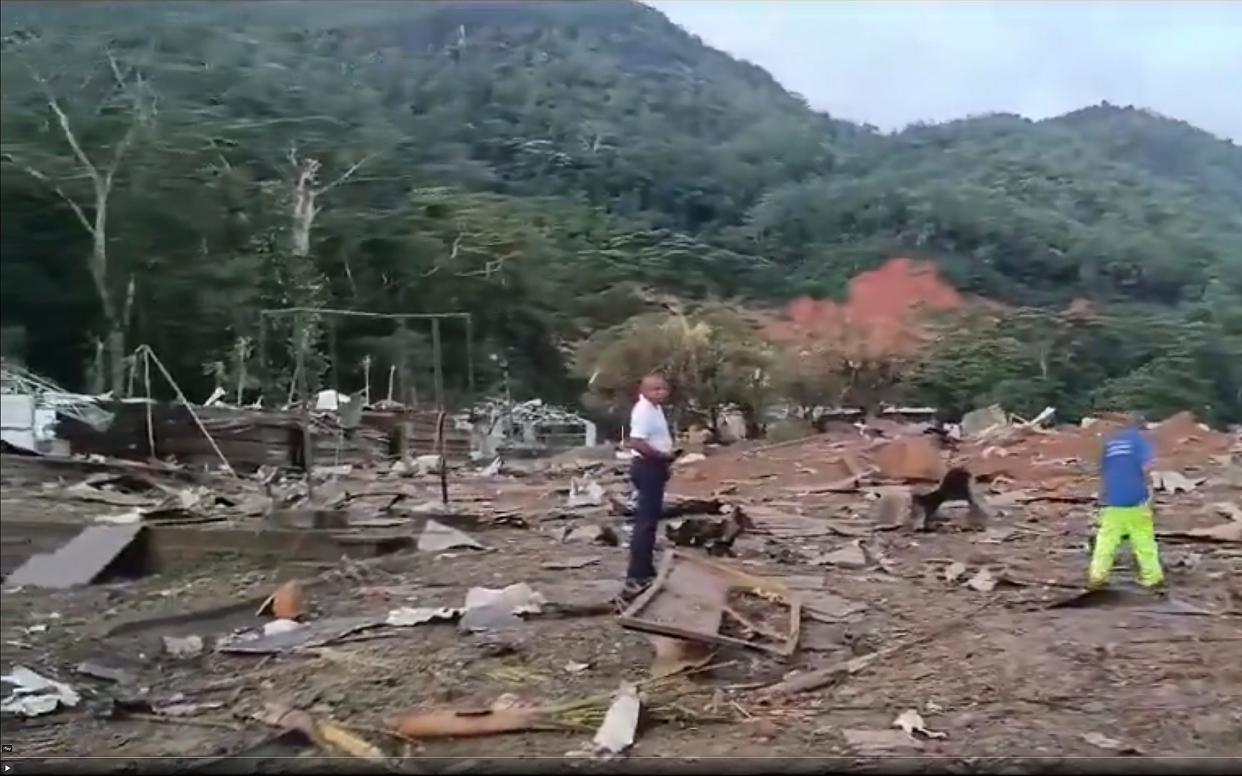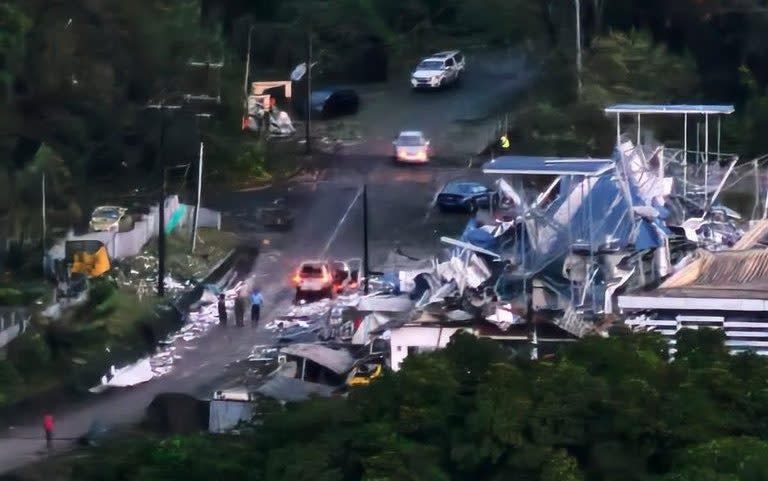Seychelles declares emergency after explosion and flooding

The Seychelles has declared a state of emergency after a blast at an explosives store caused massive damage on its main island of Mahe.
The explosion shook an industrial zone, wrecking buildings, as heavy rains triggered flooding which killed three people, President Wavel Ramkalawan told reporters on Thursday.
Authorities ordered all citizens except essential workers to stay at home. Footage broadcast on national television showed streets covered in deep mud and strewn with debris and uprooted trees.
“Following an explosion at the CCCL explosives store that has caused massive damage to the Providence Industrial area and the surrounding areas and major destruction caused by flooding due to heavy rains, the President has declared a State of Emergency for today the 7th December,” Mr Ramkalawan’s office said in a statement.

“Everyone is being asked to stay at home. All schools will be closed. Only workers in the essential services and persons travelling will be allowed free movement.”
The government’s official Visit Seychelles account on X, formerly known as Twitter, said the international airport and ferries between its islands remained operational for tourists.
To all our visitors currently in the Seychelles, we kindly ask for your cooperation and understanding whilst the authorities handle the situation.
The Seychelles international Airport is still operational and ferry services between islands are operating for visitors. pic.twitter.com/pJPSDfGJVL— The Seychelles Islands (@visitseychelles) December 7, 2023
The Seychelles, a major tourist destination, is made up of 115 islands and is the least populous country in Africa with about 100,000 people. The archipelago is famous for its idyllic white beaches and high-end tourism. Mahe, where the capital Victoria is located, is home to 87 per cent of the country’s population.
Parts of Africa – particularly Kenya, Somalia and Ethiopia – have experienced heavier rainfall than usual since October, linked to the weather phenomenon El Nino.
According to the UN, the situation has been exacerbated by the combined impact of El Nino and the Indian Ocean Dipole – a climate system defined by the difference in sea surface temperature between western and eastern areas of the ocean.
El Nino is typically associated with increased heat worldwide, as well as drought in some parts of the world and heavy rains elsewhere.
The weather phenomenon last occurred in 2018-2019 and was followed by an exceptionally long La Nina – El Nino’s cooling opposite – which ended earlier this year.
Extreme weather events are occurring with increased frequency and intensity as the Earth’s climate continues to warm.

